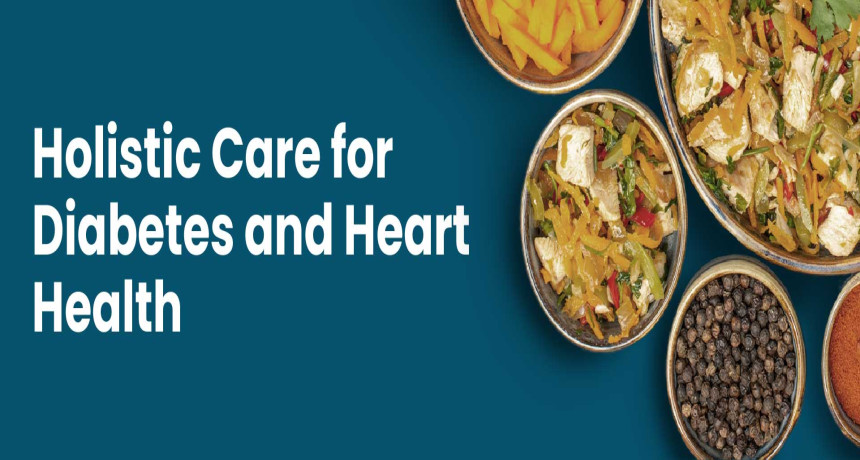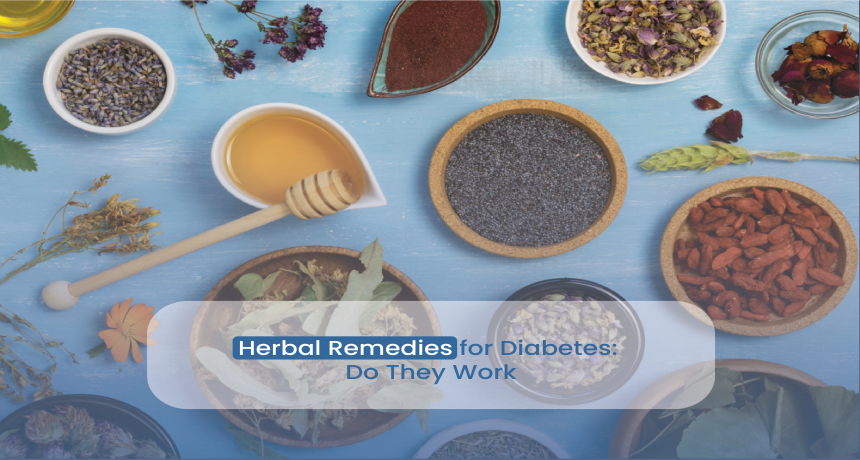Indian Diet Chart for Fatty Liver: What to Eat for Better Health
2025-04-01 Fatty liver disease has become increasingly common in India, affecting nearly one in four adults across the country. While medical intervention is sometimes necessary, diet plays a crucial role in both preventing and reversing fatty liver disease. Traditional Indian cuisine, when properly balanced, can provide an excellent foundation for a liver-friendly diet. This comprehensive guide explores the ideal Indian diet chart for fatty liver, combining ancient wisdom with modern nutritional science. Fatty liver disease occurs when excess fat accumulates in liver cells. In India, the prevalence of non-alcoholic fatty liver disease (NAFLD) has risen dramatically in recent decades, largely due to changing dietary patterns, increased consumption of processed foods, and more sedentary lifestyles. The Indian population may have unique genetic predispositions that affect how the liver processes fats and carbohydrates. Research suggests that Indians may develop fatty liver at lower body mass indexes compared to Western populations, making dietary management even more critical. Before diving into specific meal plans, it's important to understand the fundamental principles that make an Indian diet beneficial for fatty liver: Traditional Indian whole grains like bajra (pearl millet), jowar (sorghum), ragi (finger millet), and brown rice provide complex carbohydrates that release glucose slowly, helping to manage insulin levels and reduce fat accumulation in the liver. Lentils (dal), chickpeas (chana), kidney beans (rajma), and other legumes provide plant-based protein essential for liver repair while being gentler on the organ than animal proteins. Indian cuisine's hallmark spices like turmeric (haldi), fenugreek (methi), and cinnamon (dalchini) have potent anti-inflammatory and antioxidant properties that support liver health. Locally grown, seasonal vegetables provide essential nutrients and fiber while minimizing exposure to preservatives and pesticides that can stress the liver. Cold-pressed oils like mustard oil, coconut oil, and ghee (in small amounts) provide essential fatty acids without overwhelming the liver, unlike refined vegetable oils. 7 Day Indian Meal Plan for Fatty Liver A structured meal plan helps you stay consistent with healthy eating and provides clarity on what to eat and what to avoid. Here’s a sample 7 day liver-friendly Indian diet plan: Day 1 Breakfast: Moong dal cheela + green chutney Lunch: Brown rice + lauki sabzi + plain dal Dinner: Vegetable khichdi + cucumber salad Day 2 Breakfast: Vegetable upma + green tea Lunch: 2 multigrain rotis + palak dal + beetroot salad Dinner: Oats khichdi + bottle gourd curry Day 3 Breakfast: Poha with peas + lemon water Lunch: Brown rice + masoor dal + tinda sabzi Dinner: Quinoa pulao + steamed broccoli Day 4 Breakfast: Vegetable idli + sambar Lunch: Bajra roti + moong dal + mixed veg curry Dinner: Oats porridge + spinach sauté Day 5 Breakfast: Besan chilla + mint chutney Lunch: Brown rice + dal tadka (light) + lauki raita Dinner: Vegetable soup + 2 phulkas Day 6 Breakfast: Vegetable daliya + herbal tea Lunch: Ragi roti + dal fry (low oil) + cucumber salad Dinner: Vegetable khichdi + steamed bottle gourd Day 7 Breakfast: Idli + coconut chutney Lunch: Brown rice + rajma (lightly spiced) + spinach salad Dinner: Masoor dal soup + multigrain toast Ragi (Finger Millet): High in fiber and antioxidants Bajra (Pearl Millet): Rich in magnesium and potassium Jowar (Sorghum): Contains phenolic compounds that fight inflammation Brown Rice: Provides B vitamins and fiber Barley (Jau): Contains beta-glucans that improve insulin sensitivity Moong Dal: Easiest to digest among all lentils Chana Dal: High in fiber and plant protein Rajma (Kidney Beans): Rich in fiber and antioxidants Paneer (Cottage Cheese): Moderate amounts provide protein without excessive fat Fish: Especially freshwater fish like rohu and catla, rich in omega-3 fatty acids Bitter Gourd (Karela): Contains compounds that help lower blood glucose Bottle Gourd (Lauki): Helps in detoxification and is easy to digest Spinach (Palak): Rich in iron and antioxidants Fenugreek Leaves (Methi): Helps improve insulin sensitivity Beet Root: Contains betaine, which protects liver cells Amla (Indian Gooseberry): Exceptionally high in vitamin C and antioxidants Papaya: Contains papain, which aids digestion Apple: Rich in pectin, which helps remove toxins Jamun (Indian Blackberry): Helps control blood sugar levels Pomegranate: Rich in antioxidants that protect liver cells Mustard Oil: Contains omega-3 fatty acids and is traditionally used in North Indian cooking Coconut Oil: Medium-chain triglycerides are easily metabolized Ghee (Clarified Butter): In small amounts, provides butyric acid beneficial for gut health Nuts and Seeds: Especially walnuts, flaxseeds, and pumpkin seeds Turmeric (Haldi): Contains curcumin, which has potent anti-inflammatory properties Fenugreek Seeds (Methi Dana): Helps control blood sugar and fat metabolism Cinnamon (Dalchini): Improves insulin sensitivity Curry Leaves: Rich in antioxidants and helps control blood sugar Holy Basil (Tulsi): Adaptogenic herb that helps reduce stress and inflammation While creating your diet chart for fatty liver, it's equally important to know which traditional Indian foods to limit or avoid: White rice (prefer brown rice instead) Maida (refined wheat flour) products like naan, paratha, and samosas Store-bought biscuits and bakery items Traditional Indian sweets like jalebi, gulab jamun, and barfi Sweetened beverages like mango shakes and sugary lassi Packaged fruit juices with added sugar Deep-fried foods like pakoras, vadas, and bhajis Vanaspati ghee (hydrogenated vegetable oil) Refined vegetable oils used for deep frying Pickles and papads Ready-to-eat packaged snacks Processed cheese and sauces All forms of alcoholic beverages, including traditional drinks like toddy India's diverse culinary traditions offer unique advantages and challenges for fatty liver management. Here's how to adapt regional cuisines: Opt for whole wheat roti instead of butter naan Choose dal makhani with minimal cream Select tandoori preparations over fried options Enjoy rajma-chawal with brown rice instead of white Choose idli, dosa, and uttapam made from fermented rice and urad dal Enjoy coconut in moderation for its medium-chain triglycerides Embrace vegetable-rich sambars and rasams Opt for millet-based dosas and idlis when possible Enjoy fish curries with minimal oil Choose brown rice over white rice Opt for steamed dishes like patishapta instead of fried options Include plenty of leafy greens like poi saag Enjoy dhokla and khakhra as healthy snack options Choose sprout usal over fried farsan Opt for vegetable-rich undhiyu with minimal oil Include turmeric-rich preparations like kadhi Cook with minimal oil: Use non-stick cookware and techniques like steaming, boiling, and baking. Practice portion control: Use smaller plates and follow the quarter-plate rule (half plate vegetables, quarter plate protein, quarter plate complex carbs). Stay hydrated: Drink plenty of water, herbal teas, and fresh vegetable juices without added sugar. Eat mindfully: Chew slowly and be present during meals to avoid overeating. Plan and prepare meals in advance: This prevents impulsive unhealthy food choices. Read food labels: Many packaged foods marketed as "healthy" contain hidden sugars and unhealthy fats. Keep a food diary: Track your meals and note any symptoms to identify problematic foods. While following an Indian diet chart for fatty liver is essential, combining it with other lifestyle modifications maximizes the benefits: Include at least 30 minutes of moderate physical activity, such as yoga for fatty liver, on most days. Traditional practices like yoga and pranayama are particularly beneficial for liver health. If overweight, aim for gradual weight loss of 1-2 pounds per week. Rapid weight loss can actually worsen fatty liver. Chronic stress can worsen liver disease. Practice meditation, deep breathing, or other relaxation techniques daily. Aim for 7-8 hours of quality sleep each night. Poor sleep disrupts hormones that regulate appetite and metabolism. Limit exposure to environmental toxins, including unnecessary medications that can strain the liver. When following an Indian diet chart for fatty liver, it's important to monitor your progress: Regular Medical Check-ups: Have liver function tests every 3-6 months. Body Measurements: Track weight, waist circumference, and BMI regularly. Symptom Diary: Note improvements in energy levels, digestion, and any fatty liver symptoms. Blood Sugar and Lipid Levels: Monitor these as they often improve alongside liver health. The traditional Indian diet, rich in whole grains, legumes, vegetables, fruits, and spices, provides an excellent foundation for managing fatty liver disease. By making thoughtful choices that emphasize whole foods and minimize processed ingredients, you can create a sustainable eating pattern that supports liver health. Remember that consistency is key—occasional indulgences won't derail your progress, but your everyday food choices determine your liver's health in the long run. Start with small, sustainable changes and gradually build healthier habits that will benefit not just your liver, but your overall well-being. If you're struggling with grade 1 fatty liver disease and need personalized guidance on creating an Indian diet plan suited to your specific needs, consider consulting with a fatty liver doctor in Delhi or registered dietitian who specializes in liver health. Case Study: Reversing Grade 1 Fatty Liver with a 7-Day Indian Diet Plan Mr. Pranjal Gupta is a 38-year-old man residing in Delhi. He received a diagnosis of Grade 1 fatty liver disease during a routine health examination. His symptoms were limited to malaise and some abdominal discomfort. Subsequently, with the assistance of the team at LB Clinics, he started a 7-day Indian meal plan tailored for fatty liver disease, which consisted of: Replacing white rice with brown rice and millets Ensuring his daily dal consumption incorporated lighter varieties, like moong dal and masoor dal Avoiding heavier dals, such as chana dal tadka, that utilize oil Limiting consumption of boiled rajma and chana to twice a week Drinking herbal teas and ensuring hydration with water At the 12 week mark: Total weight loss = 6.2 kg (82.5 kg → 76.3 kg) Improvement of liver enzymes = ALT improved (62 UL → 34 UL) Fatty liver reversal = Ultrasound confirmed improvement (Grade 1 fatty liver → almost normal liver function) Energy levels = self-reported improvements in digestion and less bloating after meals. Ready to transform your liver health with personalized nutrition guidance? Book a Consultation with our experts who understand both liver disease and Indian dietary patterns to create a plan tailored just for you. Yes, ghee can be included in moderation in a fatty liver diet. Traditional Indian clarified butter (ghee) contains butyric acid, which supports gut health and has anti-inflammatory properties. However, portion control is crucial—limit consumption to 1-2 teaspoons daily. Choose A2 cow ghee or organic ghee when possible, as it contains healthier fatty acid profiles. Remember that while ghee is better than processed oils, it should still be used sparingly if you're managing fatty liver disease. Rice is not completely off-limits, but the type and quantity matter significantly. White rice has a high glycemic index and can spike blood sugar, potentially worsening fatty liver. Instead, opt for brown rice, red rice, or black rice, which retain their bran and germ layers, providing more fiber and nutrients. Portion control is essential—limit to ½ cup cooked per meal. Alternatively, consider mixing rice with millets (like ragi or jowar) to reduce the overall glycemic load while maintaining the familiar taste and texture Indians enjoy. Traditional Indian sweets are typically high in sugar and fat, which can worsen fatty liver. However, you can enjoy healthier versions in moderation. Consider dates-based sweets like khajur pak, ragi halwa sweetened with jaggery instead of sugar, or fruit-based desserts like stewed apples with a touch of cinnamon. Yogurt-based sweets like mishti doi made with jaggery and low-fat yogurt are also better options. Limit these healthier treats to small portions (about 2-3 tablespoons) and consume them occasionally rather than daily. Dal is excellent for fatty liver patients when prepared properly. To make it more liver-friendly: use moong dal or masoor dal, which are easier to digest; cook with minimal oil (1 teaspoon per serving); enhance flavor with turmeric, cumin, and coriander instead of heavy tempering; add vegetables like spinach, tomatoes, or bottle gourd to increase nutrient density; and avoid using store-bought garam masala which may contain added salt and preservatives. Additionally, soaking lentils before cooking helps reduce phytic acid content and improves digestibility, making them gentler on the liver.Understanding Fatty Liver Disease in the Indian Context
Principles of an Indian Diet for Fatty Liver

1. Focus on Complex Carbohydrates
2. Incorporate Protein-Rich Vegetarian Sources
3. Emphasize Anti-Inflammatory Spices
4. Prioritize Seasonal Vegetables
5. Include Healthy Fats in Moderation

Foods to Eat vs. Foods to Avoid
Best Indian Foods to Eat for Fatty Liver
Whole Grains and Millets
Protein Sources
Vegetables
Fruits
Healthy Fats
Spices and Herbs
Indian Foods to Avoid for Fatty Liver
Refined Carbohydrates
High-Sugar Foods
Unhealthy Fats
High-Sodium Foods
Alcohol
Adapting Regional Indian Cuisines for Fatty Liver
North Indian
South Indian
East Indian
West Indian
Practical Tips for Following a Fatty Liver Diet Chart
Combining Diet With Other Lifestyle Changes
Regular Exercise
Weight Management
Stress Management
Adequate Sleep
Avoid Toxins
Monitoring Progress on Your Fatty Liver Diet
Conclusion: Embracing a Liver-Friendly Indian Diet
Frequently Asked Questions About Indian Diet for Fatty Liver
1. Can I include ghee in my diet if I have fatty liver disease?
2. Is rice completely off-limits for fatty liver patients?
3. What Indian sweets or desserts can I safely consume with fatty liver?
4. How can I make dal more liver-friendly in my daily Indian diet?
5. Is coconut a good food for fatty liver in Indian cuisine?
Coconut can be included in a fatty liver diet in moderation. While coconut contains saturated fat, it's primarily composed of medium-chain triglycerides (MCTs) that are metabolized differently than other fats. MCTs are directly transported to the liver where they're quickly used for energy rather than stored as fat. In Indian cuisine, use fresh coconut as a garnish (1-2 tablespoons) for dishes like upma or poha, or use coconut milk in small amounts (¼ cup) for curries. However, avoid coconut oil for deep frying, and limit total coconut consumption if you have high cholesterol alongside fatty liver disease.
.png)















